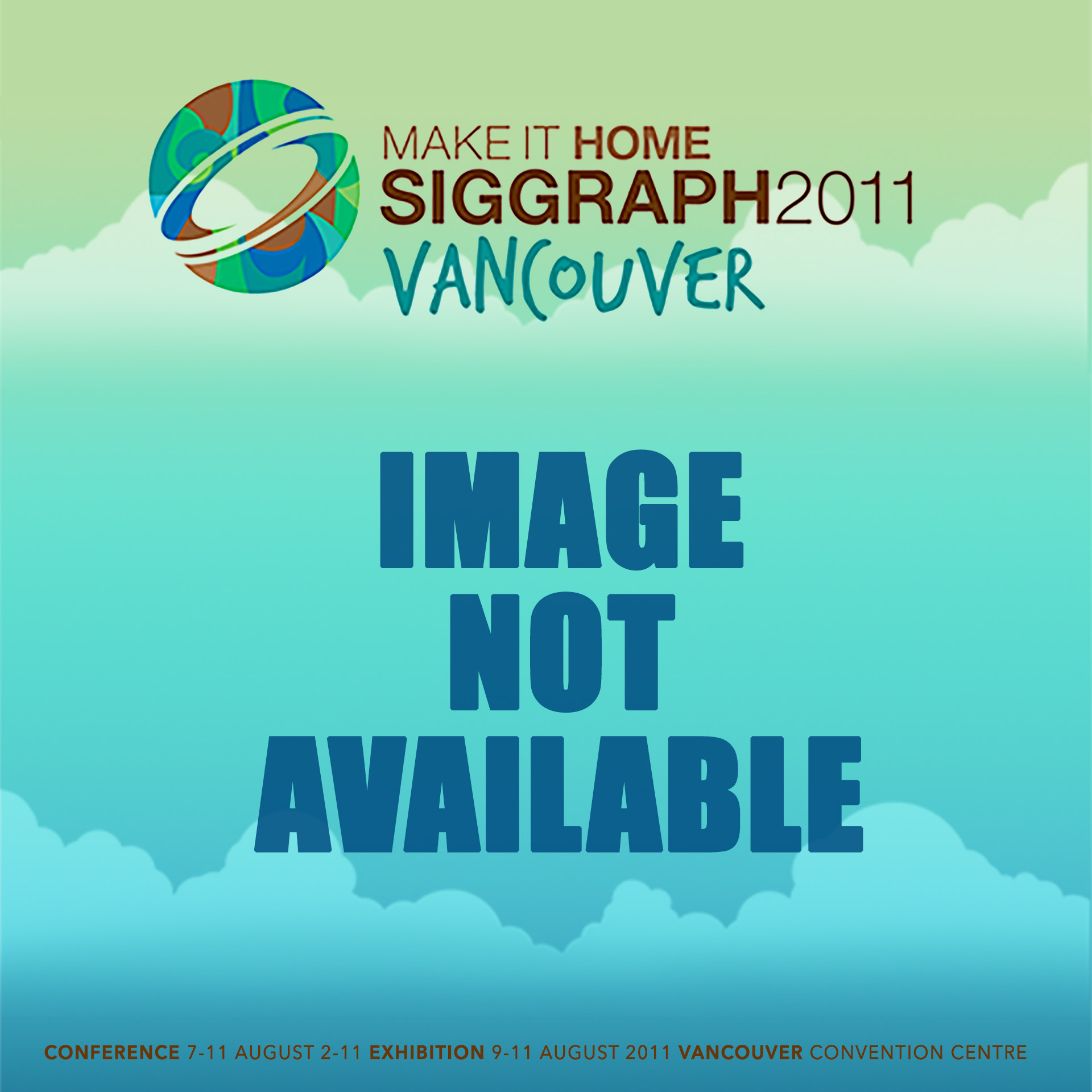“Highlighted Depth-of-Field Photography: Shining Light on Focus” by Kim, Horstmeyer, Kim and Raskar
Conference:
Type(s):
Title:
- Highlighted Depth-of-Field Photography: Shining Light on Focus
Presenter(s)/Author(s):
Abstract:
We present a photographic method to enhance intensity differences between objects at varying distances from the focal plane. By combining a unique capture procedure with simple image processing techniques, the detected brightness of an object is decreased proportional to its degree of defocus. A camera-projector system casts distinct grid patterns onto a scene to generate a spatial distribution of point reflections. These point reflections relay a relative measure of defocus that is utilized in postprocessing to generate a highlighted DOF photograph. Trade-offs between three different projector-processing pairs are analyzed, and a model is developed to help describe a new intensity-dependent depth of field that is controlled by the pattern of illumination. Results are presented for a primary single snapshot design as well as a scanning method and a comparison method. As an application, automatic matting results are presented.
References:
- Bae, S. and Durand, F. 2007. Defocus magnification. Comput. Graph. Forum 26, 3.
- Born, M. and Wolf, E. 1970. Principles of Optics. Pergamon Press.
- Davis, J., Nehab, D., Ramamoothi, R., and Rusinkiewicz, S. 2005. Spacetime stereo: A unifying framework for depth from triangulation. IEEE Trans. Patt. Anal. Mach. Intell. 27, 2.
- Eisner, M., Lindlein, N., and Schwider, J. 1998. Confocal microscopy with a refractive microlens-pinhole array. Optics Lett. 23, 10.
- Hasinoff, S. and Kutulakos, K. 2006. Confocal stereo. In Proceedings of the 9th European Conference on Computer Vision (ECCV), 259–268.
- Heintzmann, R., Hanley, Q. S., Arndt-jovin, D., and Jovin, T. M. 2001. A dual path programmable array microscope (pam):simultaneous acquisition of conjugate and non-conjugate images. J. Microscopy 204, 119–137.
- Joshi, N., Matusik, W., and Avidan, S. 2006. Natural video matting using camera arrays. In Proceedings of the International Conference on Computer Graphics and Interactive Techniques. ACM SIGGRAPH. 779–786.
- Kim, J., Lanman, D., Mukaigawa, Y., and Raskar, R. 2010. Descattering transmission via angular filtering. In Proceedings of the European Conference on Computer Vision (ECCV’10). Lecture Notes in Computer Science, vol. 6311. Springer, 86–99.
- Lai, S., Fu, C., and Chang, S. 1992. A generalized depth estimation algorithm with a single image. IEEE Trans. Patt. Anal. Mach. Intell. 14, 4, 405–411.
- LeMoigne, J. and Waxman, A. 1988. Structured light patterns for robot mobility. IEEE J. Robot. Autom. 4, 5, 541–548.
- Levoy, M., Chen, B., Vaish, V., Horowitz, M., McDowall, I., and Bolas, M. 2004. Synthetic aperture confocal imaging. In Proceedings of the Conference on Computer Graphics and Interactive Techniques. ACM SIGGRAPH.
- Levoy, M., Ng, R., Adams, A., Footer, M., and Horowitz, M. 2006. Light field microscopy. ACM Trans. Graph. 22, 2.
- Levoy, M., Zhang, Z., and McDowall, I. 2009. Recording and controlling the 4d light field in a microscope. J. Microscopy 235.
- Maas, H. 1992. Robust automatic surface reconstruction with structured light. Int. Arch. Photogram. Remote Sens. 29, B5.
- Mitic, J., Anhut, T., Serov, A., and Lasser, T. 2003. Real-Time optically sectioned wide-field microscopy employing structured light illumination and a cmos detector. Proc. SPIE 4964.
- Moreno-Noguer, F., Belhumeur, P. N., and Nayar, S. K. 2007. Active refocusing of images and videos. In Proceedings of the Conference on Computer Graphics and Interaction Techniques ACM SIGGRAPH 2007.
- Mouaddabi, E., Batile, J., and Salvi, J. 1997. Recent progress in structured light in order to solve the correspondence problem in stereovision. In Proceedings of the IEEE International Conference on Robotics and Automation. (ICRA).
- Nayar, S., Krichnan, G., Grossberg, M., and Raskar, R. 2006. Fast separation of direct and global components of a scene using high frequency illumination. ACM Trans. Graph. 25, 3, 935–943.
- Ng, R., Levoy, M., Bredif, M., Duval, M., Horowitz, G., and Hanrahan, P. 2004. Light field photography with a hand-held plenoptic camera. Tech. rep, Stanford University.
- Salvi, J., Pages, J., and Batlle, J. 2004. Pattern codification strategies in structured light systems. Patt. Recogn. 37, 827–849.
- Schechner, Y., Kiryati, N., and Basri, R. 2000. Separation of transparent layers using focus. Int. J. Comput. Vis. 39, 1, 25–39.
- Shrikhande, N. and Stockman, G. 1989. Surface orientation from a projection grid. IEEE Trans. Pattern Anal. Mach. Intell. 11, 6, 650–655.
- Sun, J., Kang, S. B., and Shum, H. Y. 2006. Flash matting. In Proceedings of the International Conference on Computer Graphics and Interactive Techniques. ACM SIGGRAPH. 361–366.
- Tiziani, H. and Uhde, H. 1994. Three-Dimensional analysis by a microlens-array confocal arrangement. Appl. Optics 33, 567–572.
- Wang, Y., Mitiche, A., and Aggarwal, J. 1987. Computation of surface orientation and structure of objects using grid coding. IEEE Trans. Pattern Anal. Mach. Intell. 9, 129–137.
- Watanabe, M. and Nayar, S. 1998. Rational filters for passive depth from defocus. Int. J. Comput. Vis. 27, 3, 203–225.
- Will, P. and Pennington, K. 1971. Grid coding: A preprocessing technique for robot and machine vision. Artif. Intell. 2, 319–329.
- Wilson, T., Juskaitis, R., Neil, M., and Kozubek, M. 1996. Confocal microscopy by aperture correlation. Optics Lett. 21, 3.
- Zhang, L. and Nayar, S. 2006. Projection defocus analysis for scene capture and image display. ACM Trans. Graph. 25, 3, 907–915.




